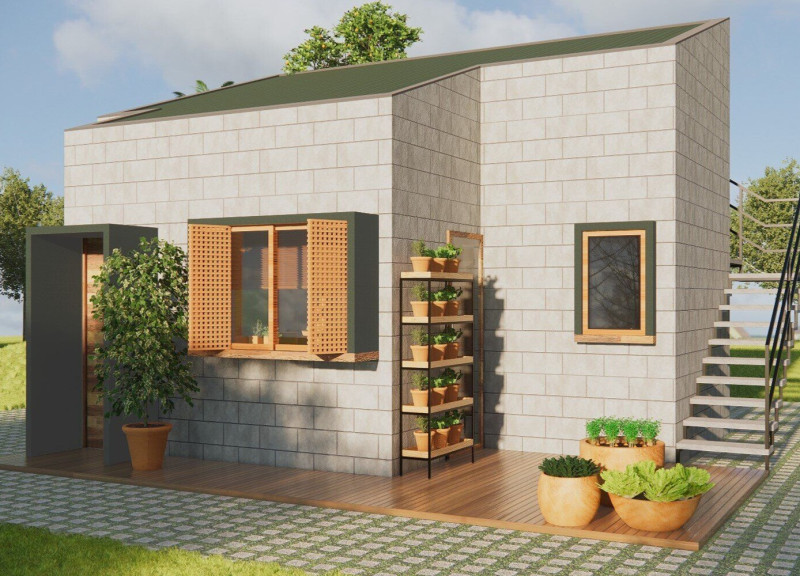5 key facts about this project
The BURITI MICROHOME is a compact housing solution designed for urban residents in Brazil. This dwelling caters to the needs of individuals and couples, balancing functional living with cultural elements. Its layout promotes a comfortable and inviting atmosphere, making it suitable for modern lifestyles while reflecting local traditions.
Cultural Integration
The design centers around a communal space that invites togetherness. Within this area, a round table and stove are key features, symbolizing traditional Brazilian practices. This central arrangement enhances social interaction, making it a gathering point for residents and their families. The warmth of the space encourages a sense of belonging and connection to cultural heritage.
Environmental Considerations
The BURITI MICROHOME takes climate into account through features such as volumetric windows and wood brise-soleil panels. These elements not only allow light into the home but also help manage temperature and airflow. In a tropical climate, this thoughtful design promotes comfort and reduces the need for artificial cooling, creating a pleasant indoor environment year-round.
Material Efficiency
Cement blocks are utilized as the primary building material, providing a practical solution for affordable housing. This choice reflects an understanding of local construction methods and the requirements of low-income communities. Cement blocks are accessible, allowing for easy replication of the home across different regions, which addresses the ongoing housing shortage in Brazil.
Functional Design Features
The rooftop solarium serves as an extension of the living space, emphasizing outdoor connectivity. This area can be used for leisure and social gatherings, making it a versatile part of the home. In addition, the incorporation of self-sustaining technologies like thermal solar panels and water management systems enhances energy efficiency.
Every aspect of the BURITI MICROHOME is carefully considered to enhance daily living while honoring cultural roots. The combination of communal spaces, practical materials, and sustainable features creates a dwelling that meets modern needs effectively.


















































